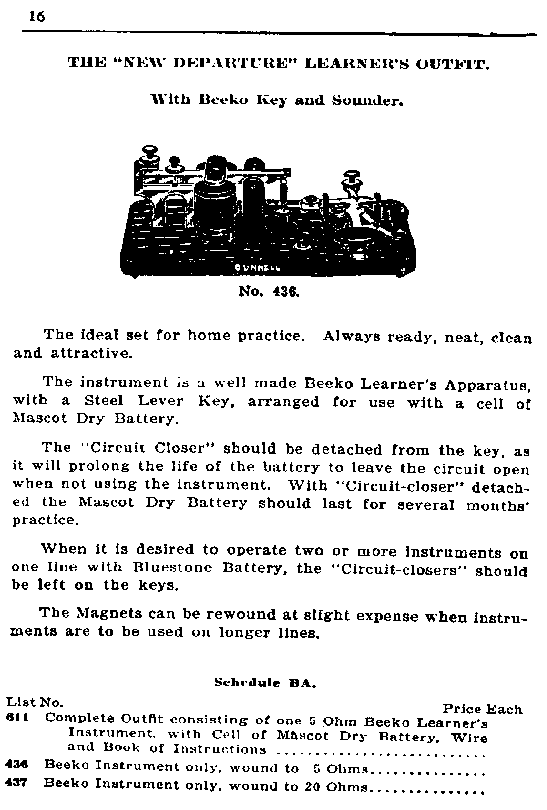Bunnell Learner's Outfit
 |
16A With a key frame and sounder pivot standard of stamped steel, this was Bunnell's cheapest combination set. Since most students probably coughed up an extra fifty cents to get the "Dandy" learner's outfit with cast iron frames on the key and sounder, the "New Departure" set (as with the cheapest versions of many collector items) semms to be relatively hard to find. Unlike the bluestone battery, dry cell batteries wear down quickly when left in-circuit for an extended time. Since early learner's sets were two-terminal circuits, a pair couldn't be set up too far apart with dry cells because (with both circuit closers open) neither operator could send without prearrangement for the other to close the key. One solution was the three-terminal sets made, for example, by Signal Electric Manufacturing Company. Although the keys still had to be kept open when using dry cells, either could initiate transmission to the other without prearrangement. The drawbacks were the need for a third wire and the lack of respone of the sender's sounder which normally allows monitoring one's sending and the condition of the line. The better solution for the student of the late nineteenth and early twentieh century was to use gravity batteries. The most popular was the bluestone type, and the most common design used a crowfoot zinc. The student would learn not only the code but also some of the apparatus of his chosn trade. Gravity batteries were used on railroads, while dry cells were more popular in commercial applications. |